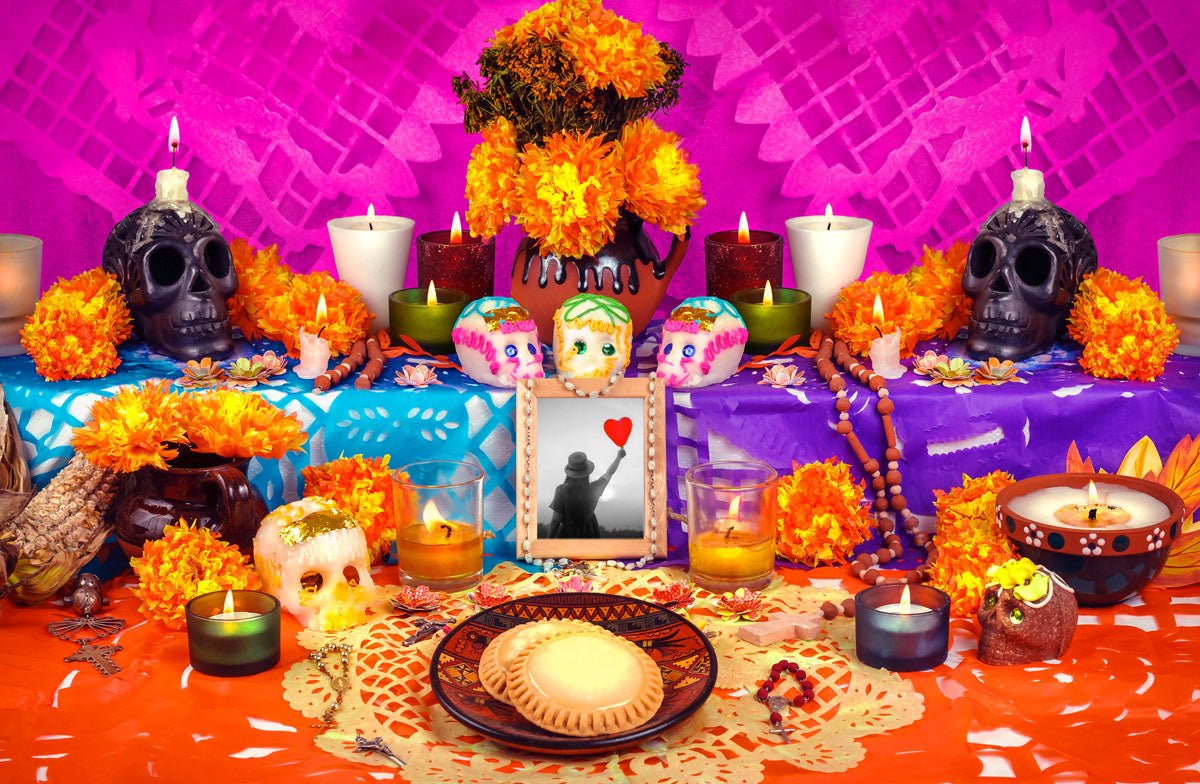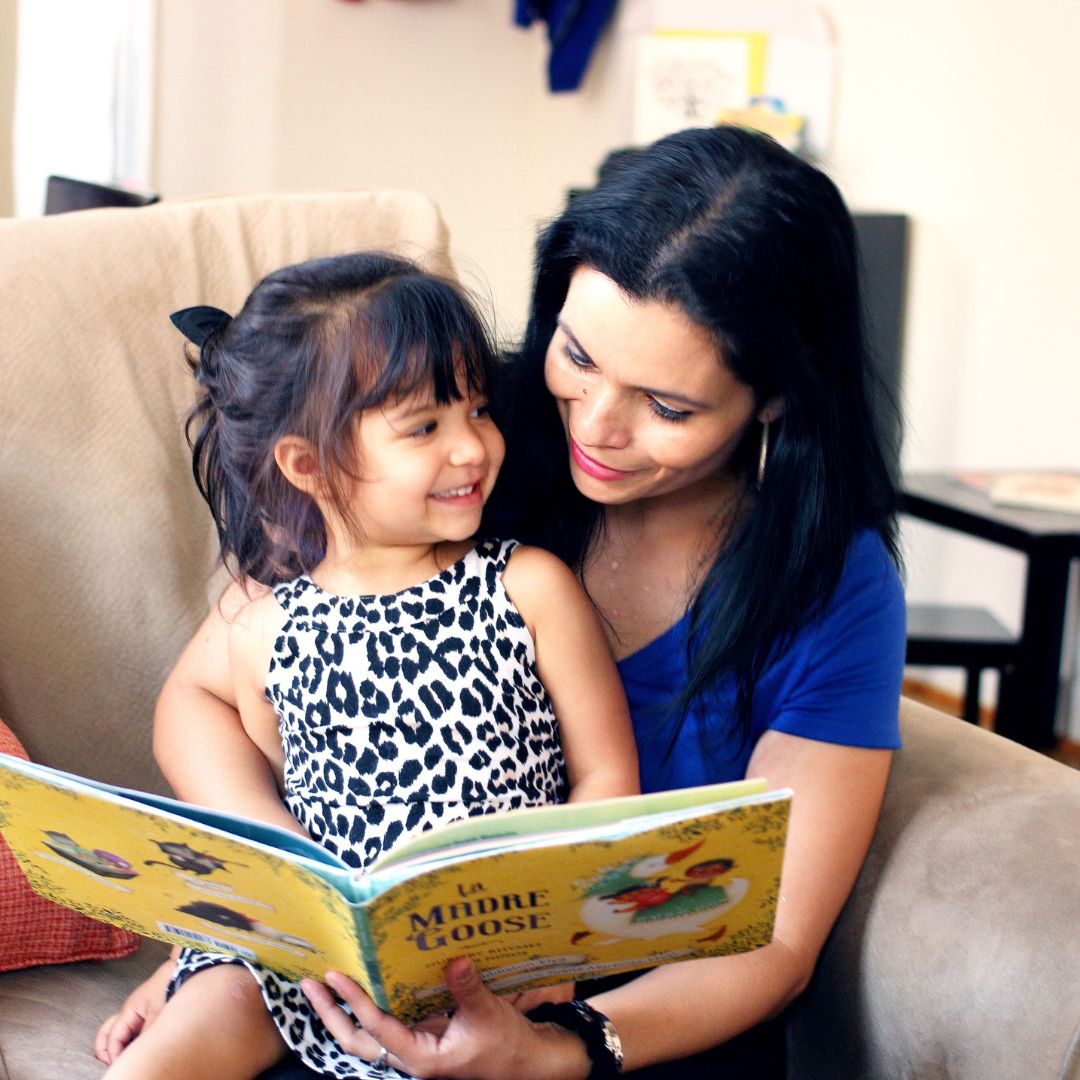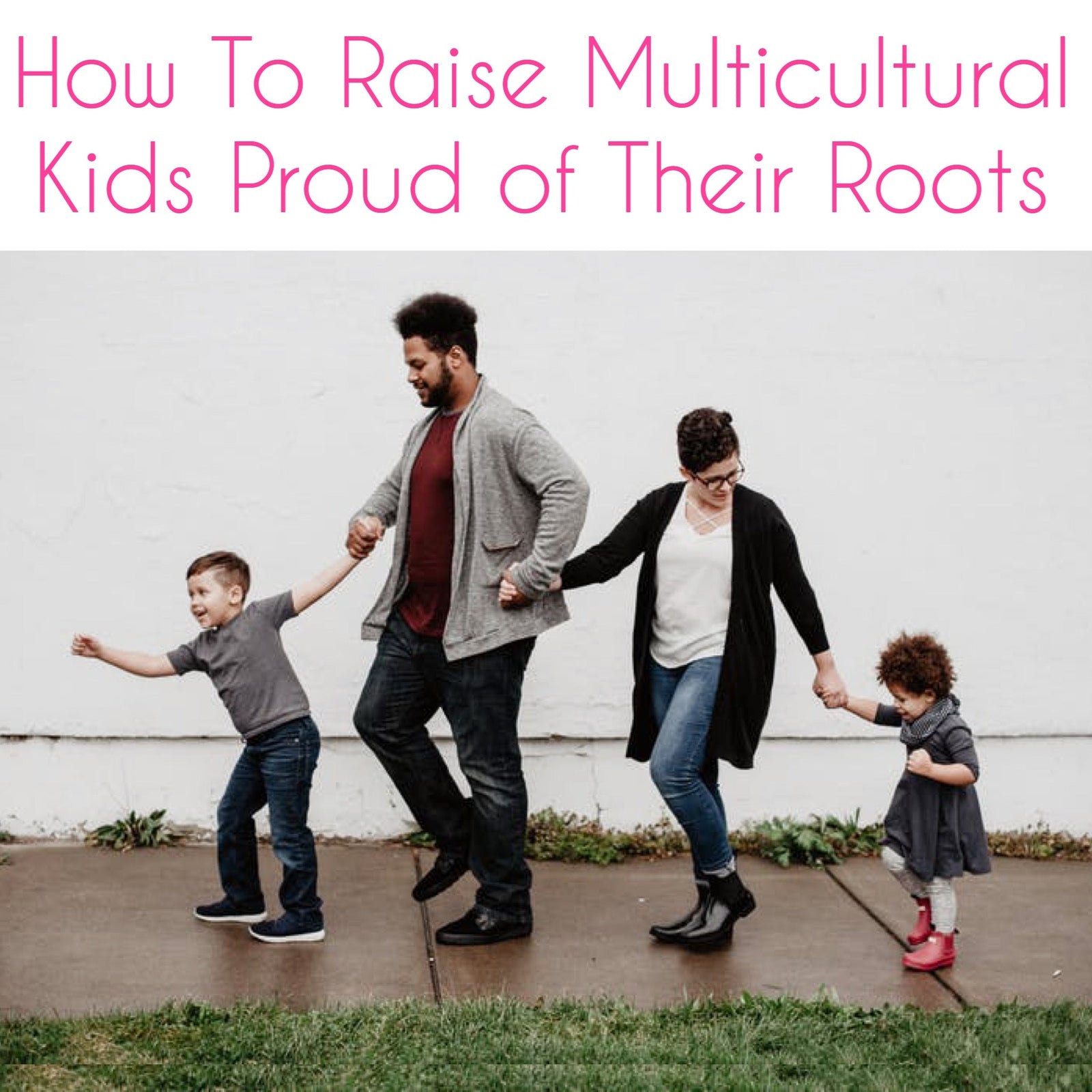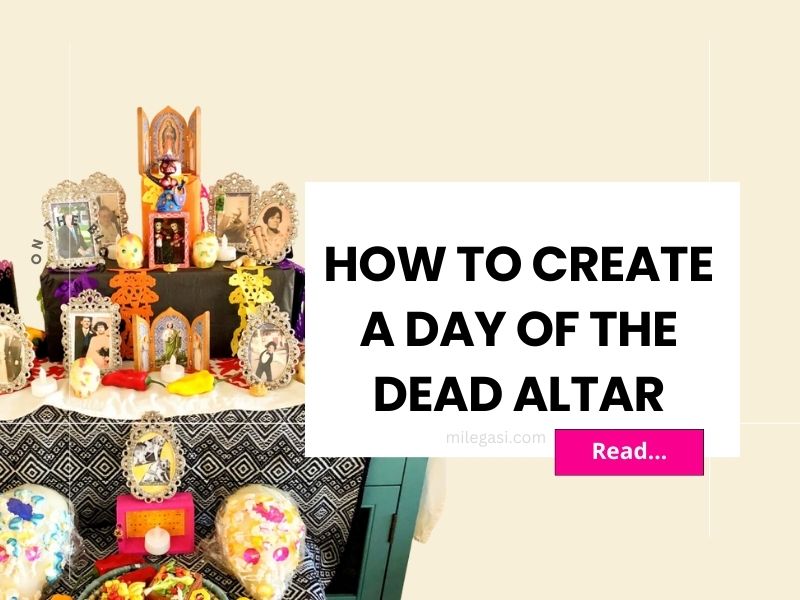
In the U.S. most people associate Day of the Dead with Mexican culture but in reality in many Latin American countries the Dead or Departed are celebrated, honored, and remembered. It is an observance that coincides with the Catholic religious holidays of All Saints Day on Nov 1 or All Souls Day on Nov. 2. Many families get together create altars or "ofrendas," visit graves, and may celebrate by having a big feast in honor of the deceased, and dress up in parades.

While it may be easier as adults to celebrate a deceased one's life, a child that experiences the loss of a loved one can be a very traumatic experience. Helping our kids Honor and remember the dead or departed in a positive and creative way can help them better deal with their emotions and better understand why we as Latinos honor this tradition.
Whether you're Mexican, Bolivian, or Colombian, here are some ways to honor the deceased with our kids.
Mexico
According to National Geographic, "Traditions connected with the holiday include building private altars called ofrendas honoring the deceased using calaveras, aztec marigolds, and the favorite foods and beverages of the departed, and visiting graves with these as gifts." Altars often include photographs of the deaceased, christian iconography like crosses or saints, pan de muerto (bread of the dead), plate of salt, glass of water (water), candles (fire), papel picado or artfully decorated paper (wind), clay bowls (earth) often filled with food, personal objects of the departed, toy, flowers, fruits, traditional food, copal incense, and a resting mat.
There are many ways to get your child involved.
Create a craft picture frame with your child for the loved ones picture for the ofrenda.
Check out Mexic-Arte's Day of the Dead Educational Activity Guide for more activities and history, http://www.mexic-artemuseum.org/images/uploads/education/Day_of_Dead_Guide.pdf
Ecuador
November 2 of each year is celebrated the "Dia de los Difuntos" (Day of the Deceased), characterized by a mixture of traditions and ancestral customs. Nov 1st is All Saints Day but families are typically preparing foods for the next day. In these dates as part of an ancestral rite la "colada morada" (purple thickened drink) is made and consumed along with guaguas de pan (bread) that began in the 19th century. At that time, the Indians prepared mass figures to remember their dead, especially the children. It is from there that comes the name of "guagua" that means child in Quechua. Families will dress up, visit graves of loved ones, and will picnic on cemetery grounds.
Have your child help create guaguas de pan and colada morada.
https://www.laylita.com/recipes/dia-de-los-difuntos-or-day-the-deceased-in-ecuador/
Guatemala
In Guatemala it is a 3 day celebration that begins on October 31st. It is more of a family holiday. Dia de los Difuntos is typically celebrated by visiting loved ones graves painting them or cleaning them up, and decorating them with flowers, candles and incense, praying, and having a "fiambre" (Guatemalan salad made with many ingredients) and other foods like tamales. In Santiago Sacatepéquez, the cemetery is filled with people and is the site of the astounding and impressive display and flight of the famous giant kites. Many cemeteries will also be filled with kites for sale, as the flying of kites is used as a means of communicating with the dead and showing them where to come down to visit their family members.
Create a kite with your child.
Bolivia
Bolivia marks a 2 day celebration with Dia de Todos los Santos (All Saints Day) on Nov 1, and Dia de los Difuntos (Day of the Deceased) on Nov.2. Families will typically create a shrine or apxata in honor of the deceased at home or at a cemetery. A table is covered with black table cloth for an adult or white for a child with sugar cane at each corner. A picture of the deceased is placed at the center of the table along with Catholic elements like rosaries or crucifixes, food, flowers, alcohol, and an endless assortment of "tantawawas" or sweet breadsmade into various different shapes. Some of the breads are shaped into babies (wawas) and faces are either decorated onto the breads or little clay heads and faces are baked into the bread. In addition, other breads are shaped like ladders (so the souls of the dead can climb up to heaven), stars, crosses, or angels with wings to help children and babies to rise to heaven. On Nov. 2nd families will head to cemeteries to celebrate, picnic, pray, and sing. Music is very important and families will often hire bands or bring instruments like guitars or trumpets to sing to the dead and renergize them for the journey back.
Create a musical instrument with your child.
OTHER COUNTRIES
Many other Latin American countries celebrate All Saint's Day and Day of the Dead or Departed by visiting graves, putting fresh flowers, praying, singing, or going to church. In Colombia, Paraguay, and Honduras, for example people will visit graves and put fresh flowers (pic 1) while in city of Tonacatepeque, El Salvador they celebrate leyendas (folklore stories) familiar to many of us like La Llorona (pic 2).
Final Thoughts...
To be honest, I remember going to church with my mom to honor my grandparents (whom I never met) but I don't specifically remember the dates, although now it makes sense!
Whether you are Catholic or not or if your country doesn't typically have this holiday, remembering and honoring our deceased loved ones is a beautiful thing to share and teach our children. It keeps our familia's history alive, it keeps our traditions alive, and it keeps our cultura alive for future generations.

Found this blog post helpful? Sharing our Hispanic and Latinx traditions and Spanish language with our kids is at the forefront of our mission here at Mi Legasi. Check out the many ways our founder can help you as a parent do the same HERE.

























Leave a comment (all fields required)